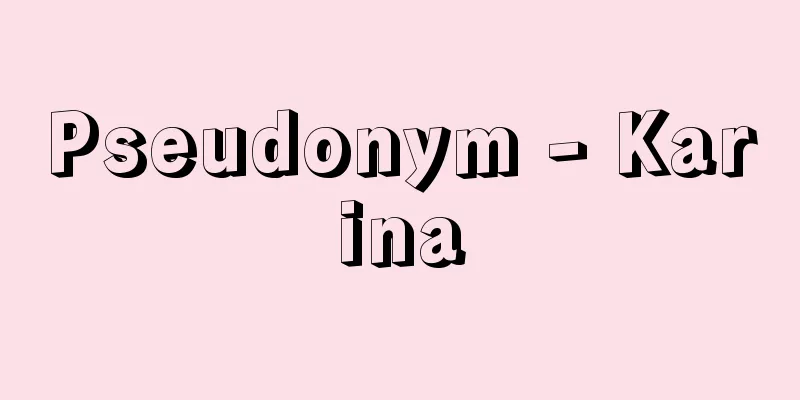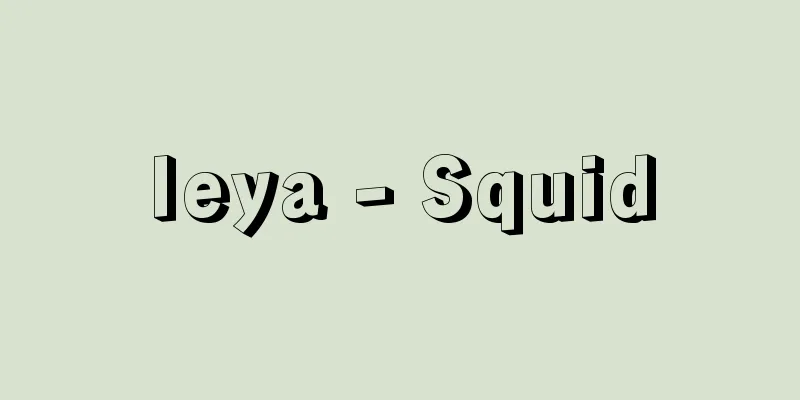Sacrifice - nail (English spelling)

|
Offerings and sacrifices to the spirits. There is a big gap in the standard of "cruelty" between offering first fruits to the gods and human sacrifice, the religious slaughter of humans. Therefore, it is generally possible to distinguish between offerings and sacrifices, with human sacrifice being considered the historically preceding form, and to explain how sacrifice changed from humans to animals and from sacrifices to offerings as human emotions matured. However, this distinction between offerings and sacrifices is based on the modern sense of "cruelty," lacks essential basis, and makes it difficult to understand the whole phenomenon of sacrifice. At the same time, within the broad phenomenon of sacrifice, there is a tendency to emphasize only certain elements, such as slaughter and bloodshed, that modern people find particularly "cruel." This further creates a narrow association of ideas: sacrifice-cruelty-barbarism-uncivilized. In the first place, slitting the throats of slaves before a god and eating their carcass is the same as eating rice balls offered on a Buddhist altar. Twice a year, in May and December, the Aztecs kneaded flour to make an image of the great god, which they worshiped, crushed, and solemnly ate. In September, they also dressed a beautiful young slave girl in the attire of a goddess, worshiped her, then decapitated her and splashed her blood. Sometimes her hands and feet were eaten. This shows that offerings are not simply a substitute for sacrifice. Both offerings and human sacrifices form part of sacrifice. The original meaning of sacrifice is "sanctification," and in that sense any sacred act can be called a sacrifice. In fact, sacrifice is a widespread phenomenon in all cultures, although its forms and functions are diverse. A wide variety of things are offered as sacrifices. Offerings include new grains such as the first harvests, as well as alcoholic beverages and dairy products. For animal sacrifices, edible livestock such as cows, sheep, and goats are common, but almost any animal can be sacrificed. There are also various methods for slaughtering the sacrifices, including slaying by beheading, stabbing, strangling, or beating, but there are also people such as the Ainu and Indians who do not like bloodshed. Offerings and slaughtered victims are crushed, scattered, incinerated, or otherwise disposed of, unless they are consumed by humans. These offerings and sacrifices are offered to divine spirits, and their purposes include spiritual communication, gift-giving, exchange, trade, warding off evil spirits, purification, atonement, and the acquisition of vitality. Theories on sacrifice include the idea that it is a gift to God (Tylor's gift theory) and the idea that God and humans communicate by eating the sacrifice together (Robertson-Smith's communication theory), but they can be divided into three categories based on the view of the nature of sacrifice. (1) The sacrifice is considered to be a mere object (gift theory). (2) Emphasis on the identification of God and sacrifice (Robertson-Smith, Fraser). (3) Emphasis on the identification of humans and sacrifice (Hubert and Mauss). However, according to Leach, these theories can be encompassed by positioning sacrifice as a medium between the sacred and profane worlds. The sacred world to which the divine spirit belongs and the profane world to which humans belong are exclusively distinguished, but the boundary area that mediates between these two worlds becomes the space when a sacrifice is performed. Therefore, during a sacrifice, the offering or sacrifice is sanctified and transfers its belonging from the profane world to the boundary, and is destroyed as its holiness increases. At this point, the profane and sacred worlds are mixed together, and sacrifice becomes extremely dangerous and is considered taboo. After this, the life of the sacrifice belongs to the sacred world and becomes the property of a divine spirit, while the corpse belongs to the secular world and becomes the property of humans. This separates the two mixed worlds once again, and the secular world regains stability while also acquiring vitality, purifying power, and fertility. In other words, the sacrifice mediates between the opposing sacred and secular worlds, transferring the transcendental power of the sacred world to the secular world. This power is called upon through sacrifice in times of crisis, such as disease or drought, and Girard sees the crisis of the community as the background to sacrifice in Greek mythology. [Akihiro Sugino] [Reference] |Source: Shogakukan Encyclopedia Nipponica About Encyclopedia Nipponica Information | Legend |
|
神霊に対して供物(くもつ)や生贄(いけにえ)を捧(ささ)げること。初穂を神に供えることと、人間を宗教的に殺戮(さつりく)する人身御供(ひとみごくう)とでは、「残酷さ」という基準において大きな隔たりがある。したがって一般には、供物offeringと生贄victimとを区別して、生贄それも人身の供犠を歴史的先行形態と考え、人間感情の成熟とともに人身から動物へ、生贄から供物へと供犠が変化してきたと説明できる。しかし、このような供物と生贄との区別は、「残酷さ」という近代人の感覚を基準としたものであり、本質的根拠に欠け、かえって供犠という現象の全体性を理解しにくくしている。同時に、供犠という広範な現象のなかで、とくに近代人が「残酷だ」と感じるような殺戮、流血といった特定の要素だけが供犠として強調される傾向がある。このことがさらに、供犠―残酷―野蛮―未開という狭隘(きょうあい)な観念連合を生み出す。そもそも神前にて奴隷ののど笛をかき切ってその死肉を食べることと、仏壇に供えたおはぎを食べることとは同じである。アステカ人は毎年5月と12月の2回、小麦粉をこねて大神の像をつくり、これを礼拝したのちに砕いて厳かに食べた。また9月には美しい少女奴隷を女神の装束で飾り礼拝したのちに、彼女の首をはねて鮮血を振りまいた。彼女の手足が食べられることもあった。このことは、供物が犠牲の単なる代替物ではないことを示している。供物も人身御供もともに供犠の一部を形成している。サクリファイスsacrificeの原義は「聖化」であり、その意味ではあらゆる聖なる行為をサクリファイスとよぶことができる。実際に、その形態や機能は多様だが、供犠はあらゆる文化に広範にみられる現象である。 供犠として捧げられるものは多様である。供物としては初穂などの新穀のほかに酒類や乳製品などがある。動物犠牲としてはウシ、ヒツジ、ヤギなどの食用家畜が一般的だが、ほとんどすべての動物が犠牲となる。犠牲のと畜法も斬殺(ざんさつ)、刺殺、絞殺、撲殺などいろいろだが、アイヌやインドのように流血を好まない場合がある。供物やと畜された犠牲は、人間によって消費される以外は、破砕、散布、焼却などによって処理される。こうした供物や犠牲は、神霊に対して捧げられるのだが、その目的は、霊的交流、贈与、交換、取引、厄払い、浄化、贖罪(しょくざい)、生命力の獲得などである。 供犠についての学説は、神に対する贈与であるという考え(タイラーの贈与説)や、神と人間が犠牲を共食することによって交流するという考え(ロバートソン‐スミスの交流説)などが有名であるが、犠牲の性質に対する考え方によって三つに分けられる。(1)犠牲を単なるモノとみなす(贈与説)。(2)神と犠牲との同一化を強調する(ロバートソン‐スミス、フレーザー)。(3)人間と犠牲との同一化を強調する(ユベールとモース)。しかしリーチによれば、犠牲を聖界と俗界との媒介物として位置づけることによって、これらの諸説を包括することができる。神霊の属する聖界と人間の属する俗界は排他的に区別されているのだが、この二つの世界を媒介する境界領域が供犠の行われるとき空間となる。したがって供犠に際して、供物や犠牲は聖化されるにしたがって俗界から境界へとその帰属を移し、その聖性の高まりにおいて破却される。この時点で、俗界と聖界は混交した状態にあり、犠牲はきわめて危険なものとなりタブー視される。この後、犠牲の生命は聖界へ帰属して神霊のものとなり、死体は俗界に帰属して人間のものとなる。このことによって混交した二つの世界はふたたび分離され、俗界は安定を回復するとともに生命力、浄化力、繁殖力などを獲得している。すなわち、供犠が対立する聖俗界を媒介することにより、聖界の超越的な力が俗界に転移する。こうした力が供犠によって要請されるのは、病気や干魃(かんばつ)といった危機に際してであり、ジラールはギリシア神話における供犠の背景に共同体の危機をみている。 [杉野昭博] [参照項目] |出典 小学館 日本大百科全書(ニッポニカ)日本大百科全書(ニッポニカ)について 情報 | 凡例 |
>>: Village rules - Village rules
Recommend
River rowing
Water transportation. See the entry for the charac...
Dee
〘Noun〙 (D, d)⸨day⸩① The fourth letter of the Engli...
Union coloniale française (French Colonial Society)
An association of managers formed in 1893 to promo...
Hermatypic coral (hermatypic coral)
A general term for animals that form coral reefs, ...
Japanese burdock - Yamagobo
A perennial plant of the Phytolacca family (APG c...
Intraocular pressure - Ganatsu
The eyeball is a kind of precision ball-shaped ca...
Han-jing (Han-jing)
Mirrors from the Han Dynasty in China. Most of the...
Philadelphos
…The developed area was named Arsinoe Prefecture ...
Weiss, J.
…The liberal biography of Jesus was fundamentally...
Inahiko Hashimoto
Year of death: 15th June 1809 (27th July 1809) Yea...
Asahikawa City Former Aborigine Protection Land Disposal Law - Asahikawa City Former Aborigine Protection Land Disposal Law
...Based on this adoption, in July of the same ye...
Training - Danren
An ancient Chinese government-run militia organiz...
Whiteley, B.
...The representatives of the former are Drysdale...
Aiba Salt - Aebajio
…In the Middle Ages, it was part of Kira Manor, a...
Class organization - pupil classification
The division and organization of children and stud...









